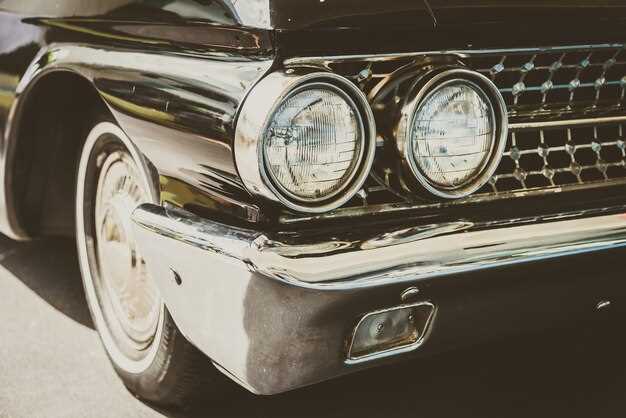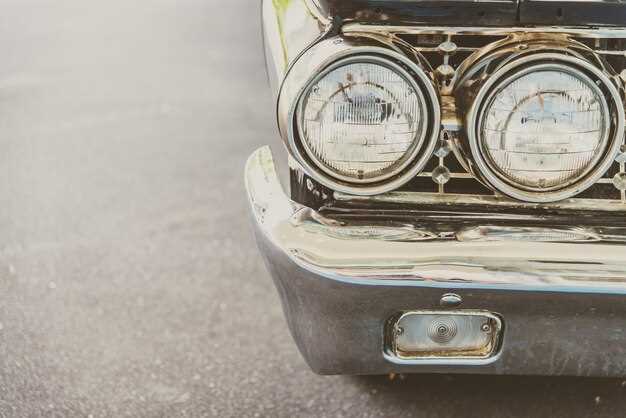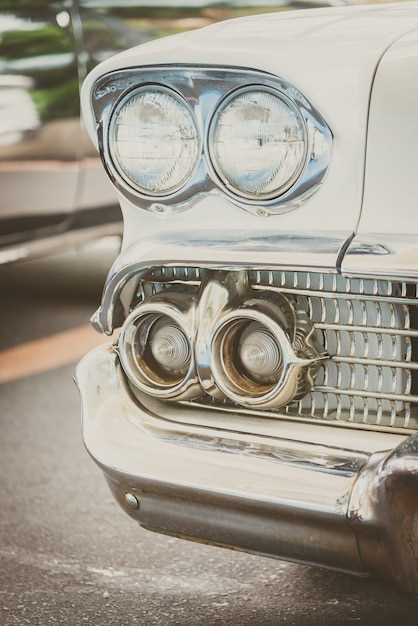
The world of vintage Porsche vehicles offers enthusiasts a unique blend of nostalgia and performance. One of the key aspects of enhancing these classic cars is the art of tuning carburetors. Proper carburetor tuning can unlock additional horsepower and improve throttle response, which is crucial for vintage models that rely on these components for optimal performance.
Understanding the relationship between engine dynamics and carburetor settings is essential for any Porsche owner looking to achieve peak performance. The intricacies involved in tuning carburetors can vary significantly among different Porsche models, making it important to tailor the tuning process to the specific capabilities of each engine. From adjusting fuel-air mixtures to ensuring the correct jet sizes, every detail counts in maximizing the potential of a vintage Porsche.
Through thoughtful tuning and adjustments, enthusiasts can preserve the character and driving experience of classic Porsches while also enhancing their performance on the road or track. This article explores the essential techniques and considerations for effectively tuning carburetors, ensuring that your vintage Porsche performs at its best.
Identifying the Right Carburetor Type for Your Classic Porsche
When it comes to tuning the engine of your classic Porsche, selecting the right carburetor type is crucial for achieving optimal performance. Different Porsche models came equipped with various carburetor systems that influenced their power delivery and efficiency. Understanding these options will help you make an informed decision tailored to your vehicle’s specific needs.
Most vintage Porsches were originally fitted with Solex or Weber carburetors. Solex carburetors, known for their simplicity and reliability, were often used in earlier models like the Porsche 356. These units provide a smooth throttle response, making them ideal for street driving and everyday use. However, for those seeking improved performance, Weber carburetors are a popular upgrade. They offer superior tuning flexibility and increased airflow, which can significantly enhance horsepower and throttle response in models such as the Porsche 911.
When selecting a carburetor, consider the intended use of your Porsche. If you are focused on restoration and maintaining originality, sticking with the factory-installed Solex may be the best approach. However, for enthusiasts aiming for higher performance levels, Weber carburetors allow for customization through various jetting options, which can help match the carb to engine modifications or specific tuning goals.
Additionally, the size of the carburetor plays a significant role in engine performance. A larger carburetor can provide increased airflow, beneficial for modified engines or those with enhanced displacement. However, it’s important to match the carburetor size with your engine’s characteristics to ensure a smooth power curve and optimal drivability.
Ultimately, identifying the right carburetor type involves considering your Porsche model, its engine configuration, and your performance goals. By choosing the appropriate carburetor and fine-tuning it effectively, you’ll not only improve your classic Porsche’s performance but also enhance your overall driving experience.
Adjusting Mixture Settings for Optimal Engine Performance

Tuning carburetors involves fine-tuning the air-fuel mixture to achieve the best engine performance in vintage Porsche models. The mixture needs to be adjusted for optimal combustion efficiency, power output, and engine responsiveness. A correct air-fuel ratio typically falls between 12.5:1 and 14.7:1, depending on the specific engine configuration and driving conditions.
Start by ensuring that the carburetor is clean and free of debris. This allows for accurate adjustments and optimal air flow. Next, use a wideband oxygen sensor to monitor the air-fuel ratio during test runs. This real-time data will guide your adjustments more effectively than solely relying on manufacturer specifications.
Begin by adjusting the mixture screws on each carburetor. These screws control the amount of fuel entering the system; turning them clockwise generally leans the mixture, while counterclockwise enriches it. Make incremental changes, typically in quarter turns, and allow the engine to stabilize before making further adjustments. Monitor the engine’s throttle response, idle quality, and acceleration to determine the impact of each adjustment.
Once the low-speed mixture is optimized, shift focus to mid-range and high-speed settings. This often requires adjusting the main jets and emulsions tubes within the carburetor. Selecting the right main jet size allows for a balanced mixture under acceleration, preventing lean or rich conditions that can lead to engine knock or loss of power.
For vintage Porsches, tuning carburetors can significantly enhance the driving experience. By carefully adjusting the mixture settings, owners can achieve improved throttle response, better fuel efficiency, and overall increased engine performance. Regular checks and adjustments may be necessary to maintain peak performance, especially as driving conditions change or with modifications made to the vehicle.
Regular Maintenance Tips for Longevity of Carburetors

Maintaining carburetors is essential for ensuring optimal performance in vintage Porsches. Regular upkeep not only prolongs the life of these components but also enhances the tuning efforts made for performance. Here are some key maintenance tips to consider.
Firstly, regularly inspect the carburetors for any signs of wear or damage. Pay close attention to gaskets and seals, as these can degrade over time, leading to air leaks and poor performance. If any components show wear, replace them promptly to prevent further issues.
Cleaning is another critical aspect of carburetor maintenance. Use a carburetor cleaner to remove dirt, varnish, and other deposits that can build up in the jets and passages. Ensure that each component is thoroughly cleaned and dried before reassembly to maintain proper function.
Adjusting the float level is also vital. A correctly set float ensures that the carburetor receives the right amount of fuel, preventing flooding or starvation. Regularly checking and adjusting the float level can significantly impact the overall tuning and performance of the engine.
Periodic synchronization is essential for multi-carb setups. Use a synchronizer tool to ensure that all carburetors are working in harmony. Misalignment can lead to uneven performance and affect tuning efforts.
Replace fuel filters regularly to avoid debris entering the carburetors. Contaminants can damage delicate components and disrupt fuel flow, negatively impacting performance. A clean fuel system is essential for effective tuning and engine longevity.
Finally, keep an eye on fuel quality. During storage or extended periods of inactivity, fuel can degrade and create varnish that clogs carburetors. Use fresh fuel and consider adding a fuel stabilizer to prevent these issues.
 Skip to content
Skip to content





